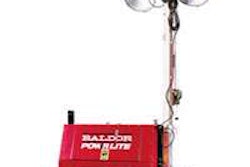As America enters a new decade, what will be the buzz about transportation? Clearly a safe, efficient, and viable transportation network should be at the forefront of issues facing policymakers at all levels of government and in all areas of our society in the coming months.
The Association of American Safety and Highway Traffic Officials (AASHTO) tells us what these are.
“In the year 2010, we’ll be seeing more job-creating construction zones on our highways, but we will still need a long-term solution to address everything from fixing potholes to making needed repairs to our aging infrastructure,” say Larry “Butch” Brown, president of the American Association of State Highway and Transportation Officials (AASHTO) and executive director of the Mississippi Department of Transportation in a written statement from AASHTO. “Even more critically for the long-term health of this nation, 2010 must also be about how smart we become at enabling goods and products to get from one point to another with speed and efficiency.”
Looking ahead, AASHTO has developed a list of the top ten transportation topics that it forecasts will be part of the national conversation in 2010 – in the media, in government and around the dinner table.
1. Adopting a long-term transportation funding bill
The current legislation that establishes funding levels and policy priorities for highways and transit expired on September 30, 2009. Since then, there have been four extensions – the most current being a short-term surface transportation authorization that will allow state departments of transportation to continue to use federal funds for highway, transit, and other projects until Feb. 28. Stop-gap extensions create difficulties for state departments of transportation since they cannot make long-term plans and commitments for more ambitious projects. In addition, without action by the Congress by March 1, state DOTs will lose $12 billion in 2010 for their highway programs. State DOTs need program continuity and stability through an extension of at least a year to adequately plan, execute and manage transportation capital programs.
2. Adopting a New Jobs Creation bill
The Senate is expected to begin debate on a jobs creation bill in mid-January. The House bill, Jobs for Main Street Act, contains several important transportation provisions including an extension of surface transportation authorization through Sept. 30, 2010. Funding would include $27.5 billion for highways and $8.4 billion for mass transit; Amtrak would receive $800 million while airports would get $500 million and shipyards $100 million. States have identified more than 9,500 ready-to-go projects that can fund projects quickly and put people to work. A jobs bill will enable states to build on last year’s American Recovery and Reinvestment Act (ARRA) projects and keep the momentum going.
3. Deterring Distracted Driving
Nearly 6,000 people lost their lives in motor vehicle crashes involving some form of driver distraction during 2008. Nineteen states and the District of Columbia prohibit drivers from text messaging while driving; 12 of those laws passed in 2009. Florida and Kentucky have already pre-filed texting ban bills for the 2010 legislative session, according to the National Conference of State Legislatures. President Obama has banned texting by federal government employees while on official business or using government property and AASHTO has passed a resolution encouraging employers and state departments of transportation to enact similar bans. The year ahead will offer more public information campaigns and driver education, more sanctions and additional research to determine the extent of the problem, whether hands-free devices are an effective solution, and whether effective enforcement strategies can be developed and/or implemented. See http://safety.transportation.org for information.
4. Ensuring Safer Roads
In Spring 2010, AASHTO will publish the Highway Safety Manual. This manual will assist highway agencies as they consider improvements to existing roadways or as they are planning, designing, or constructing new roadways. AASHTO is working with the Federal Highway Administration and the Transportation Research Board to develop training, information sessions and other implementation tools that will be made available to states and others in the highway industry. AASHTO’s goal: cut today’s 38,000 highway fatalities 50 percent in 20 years.
5. Moving on High-Speed Rail Grants
Early in 2010, a new era in U.S. intercity passenger rail service will be launched with the announcement of $8 billion in ARRA grants for state projects to initiate or improve high-speed and intercity passenger rail service. Later in the year an additional $2.5 billion will be awarded through the State Capital Grants Program of the Passenger Rail Investment and Improvement Act to carry out President Obama’s strategy for passenger rail. http://www.aashtojournal.org/Pages/110609transit.aspx
6. Taking Action to Address Climate Change
With autos and light-duty trucks contributing approximately 17 percent of the greenhouse gases (GHG) in the United States, state and local governments are developing climate change action plans and looking at the best ways to reduce emissions through technology, research, smarter travel, better cars and fuels, and improved efficiency and operation of our roads. In the year ahead, Congress will address this issue in both climate change and transportation authorization legislation. AASHTO’s Climate Change Steering Committee is working to provide technical expertise and assistance to state DOTs to reduce GHG emissions. http://realsolutions.transportation.org/Pages/default.aspx
7. Responding to Increased Congestion Due to Capacity Issues
In 2008, high gas prices drove thousands of commuters from their cars and onto buses, subways and other transit options. As gas prices moderated, however, many of these riders went back to their vehicles. In fact, despite the economic downturn, 64 of the 100 most populated cities saw increased congestion in the first six months of 2009. This congestion will only continue to worsen as more people move to metropolitan areas and little is done to increase the capacity of the overall transportation system. In early 2010, AASHTO will issue a new report that outlines a four-point plan to address the urban mobility challenge. Other reports on the transportation needs of rural and underserved areas as well as freight will follow.
8. Adopting Social Media to Provide the Latest Traffic and Travel Information
Eighty percent of state departments of transportation are now using Twitter as well as an array of other “social media” to release information on traffic incidents, road closings, weather emergencies and other transportation-related information. Thousands of travelers have signed up to use this service. In Mississippi, Twitter sites have been set up to guide drivers through hurricane evacuations. Other media being accessed by states to educate their publics include Facebook, weekly news Webchannels, podcasts and RSS feeds to spread their message. States are encouraging the use of these media “before they go” to avoid distracted driving.
9. Enhancing Safety through Roadway Improvements and Development of “Breakthrough” Technologies Such as IntelliDrive
On two-lane rural roads and major highways, rumble strips are now being installed to warn drivers when their vehicles start to leave the travel lane. On divided highways, cable median barriers are being installed to prevent fatal crashes in which vehicles run off the road into the median and cross over into oncoming traffic. With more than half of the highway fatalities occurring on rural roads, highway agencies are focusing on installing these types of lower-cost treatments to reduce these crashes. As additional studies are performed to demonstrate the effectiveness of these treatments, they will be installed on more roads across the country.
We also need to move forward aggressively to develop advanced technologies such as IntelliDrive. Data generated through vehicle sensors can be shared vehicle-to-vehicle and with vehicle-to-roadway managers to avoid collisions and reduce congestion. Funding research being led by the U.S. Department of Transportation (USDOT), AASHTO, and the auto industry to advance this concept to deployment should be a high priority in 2010.
10. Creating more livable communities
The Administration has made livable communities a key aspect of their agenda. In June of 2009, EPA, HUD and USDOT entered into a Sustainable Communities Partnership to help improve access to affordable housing, provide more transportation options, and lower transportation costs while protecting the environment in communities nationwide. Efforts by state DOTs in the coming year will include building transportation enhancement projects such as bikeways, pedestrian walkways, historic restoration and beautification projects; improving metropolitan mobility; ensuring more transit services are available in rural areas and to serve aging populations; and adding capacity to our transportation network to reduce congestion and the amount of time commuters, truckers and other drivers are stuck in traffic and so have more time with their families.
For the original press release from AASHTO, click here.












